Behind the scene: the design story behind the Jean-Paul boilersuit
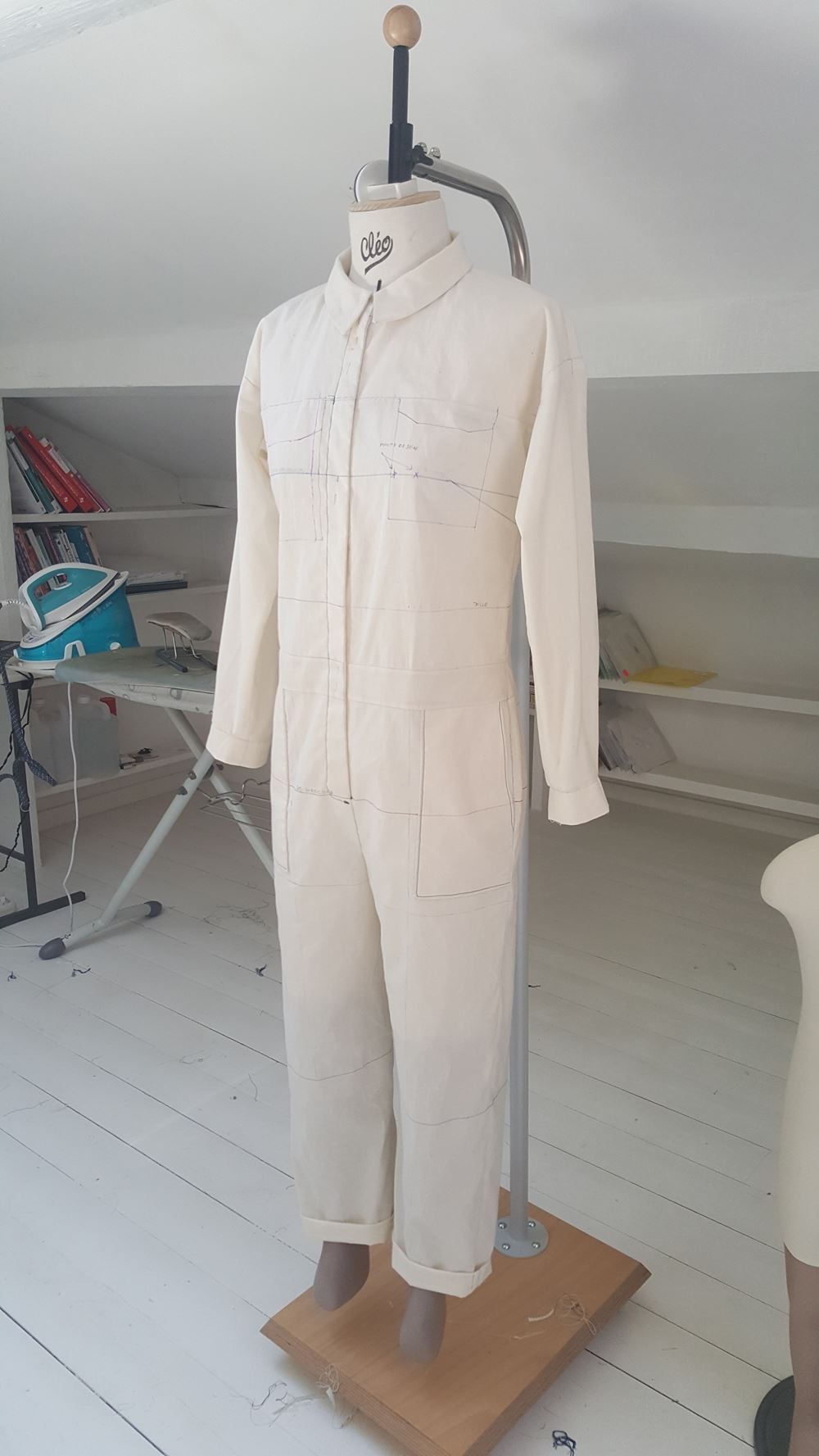
Today I'd like to guide you through my process of creating a pattern using the Jean-Paul boilersuit pattern as an exemple. It took about 6 month to developp this boilersuit pattern and I'll try to show you the various stages of development..
THE STORY
I love clothes with a workwear vibe, they are made to be used and they look more and more beautiful with time. I was dreaming of a boilersuit for ages and last year, I decided to start designing my own coverall pattern. It is not an easy one and it took a lot of try and error to get the right look and the right fit. You can also shop the James fisherman's smock and the Julien chore jacket if you like workwear clothes.
LET'S START
This pattern was drafted using a mix of techniques, draping and flat pattern drafting. Draping for fashion design is the process of positioning and pinning fabric on a dress form to develop the structure of a garment design. A garment can be draped using a design sketch as a basis, or a fashion designer can play with the way fabric falls to create new designs at the start of the apparel design process. After draping, the fabric is removed from the dress form and used to create the sewing pattern for the garment. You can learn more about the draping process here. Flat pattern drafting is a system of making flat, 2 dimensional patterns that when sewn together create a desired fit. The basic foundation starts as a 2 dimensional flat pattern. It is drafted on paper and the dimensions are taken from a model, your own body, or a company’s sizing standards. These measurements will dictate the basic shape of the patterns.
For the Jean-Paul pattern, I first draped the basic shape on the sewing form, I ended up with several pieces of fabric - one for the front bodice, one for the back bodice, one for the front pant and one for the back pant. Finally, I traced the muslin onto pattern paper and then digitize the pattern to work on my pattern making software.
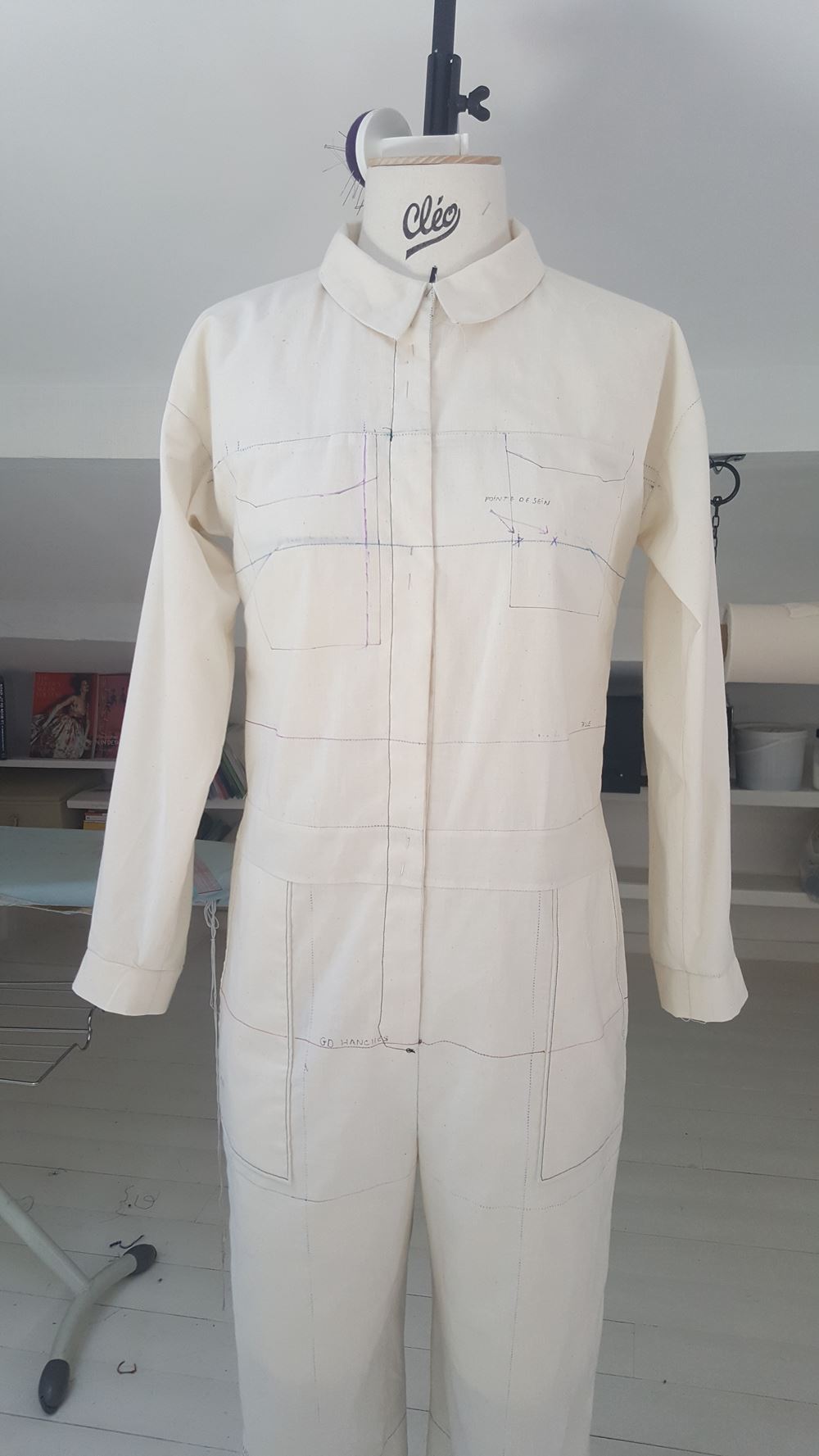
This picture was taken during the third fit test, which means that it is the third muslin of the Jean-Paul pattern. At this stage, I start drawing the shapes of the pockets, front fly and collar directly onto the muslin or with an added piece of fabric. As you can see on the picture above, the collar end is asymetrical as I was still testing a lot of different shapes.
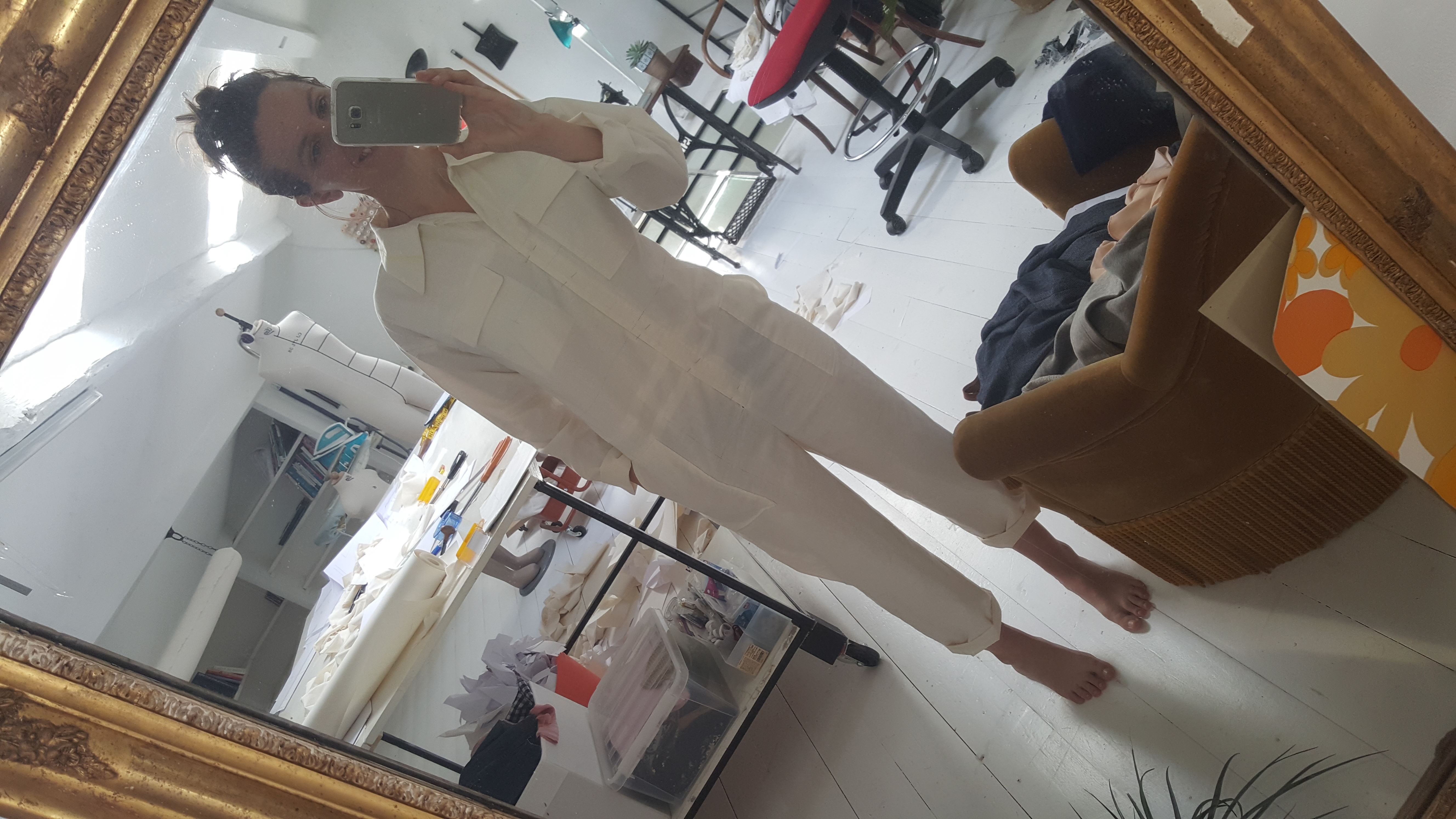 Then, I grade the pattern to my size to test the fit. It is one thing to test on a sewing form but it won't tell you if the garment is comfortable and if you can moove your arms and legs easily. I'm sarting a small sport session in my studio and I run up and down the stairs, moove my arms, bend to tie my shoelaces etc... Basic mooves that you need to be able to do to get through your day!
Then, I grade the pattern to my size to test the fit. It is one thing to test on a sewing form but it won't tell you if the garment is comfortable and if you can moove your arms and legs easily. I'm sarting a small sport session in my studio and I run up and down the stairs, moove my arms, bend to tie my shoelaces etc... Basic mooves that you need to be able to do to get through your day!
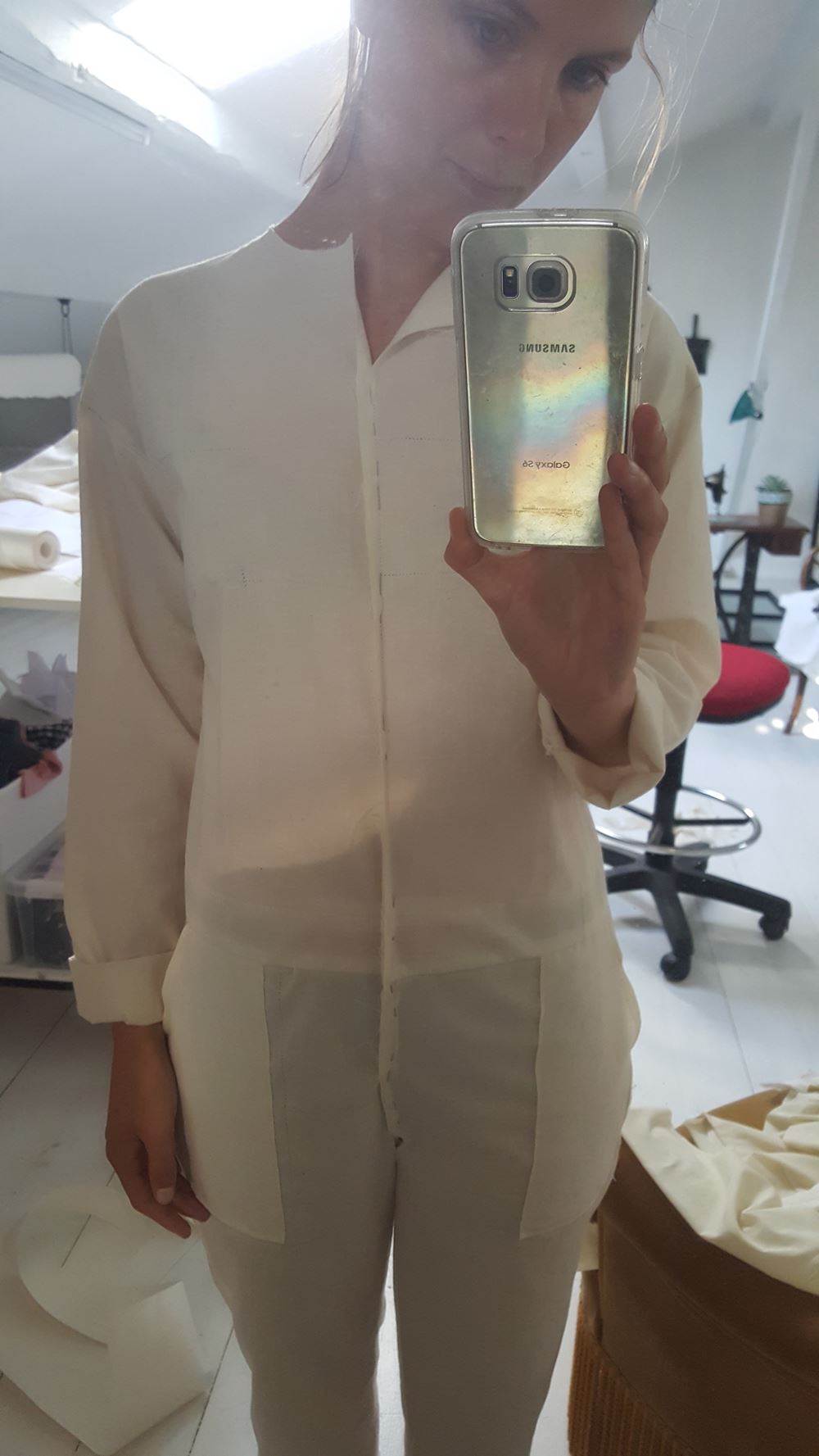 If I notice some fitting problemes, I'm working on the pattern and then I'm making a new muslin without any details. I have made about 60 muslins during the developpement of the Jean-Paul pattern.
If I notice some fitting problemes, I'm working on the pattern and then I'm making a new muslin without any details. I have made about 60 muslins during the developpement of the Jean-Paul pattern.
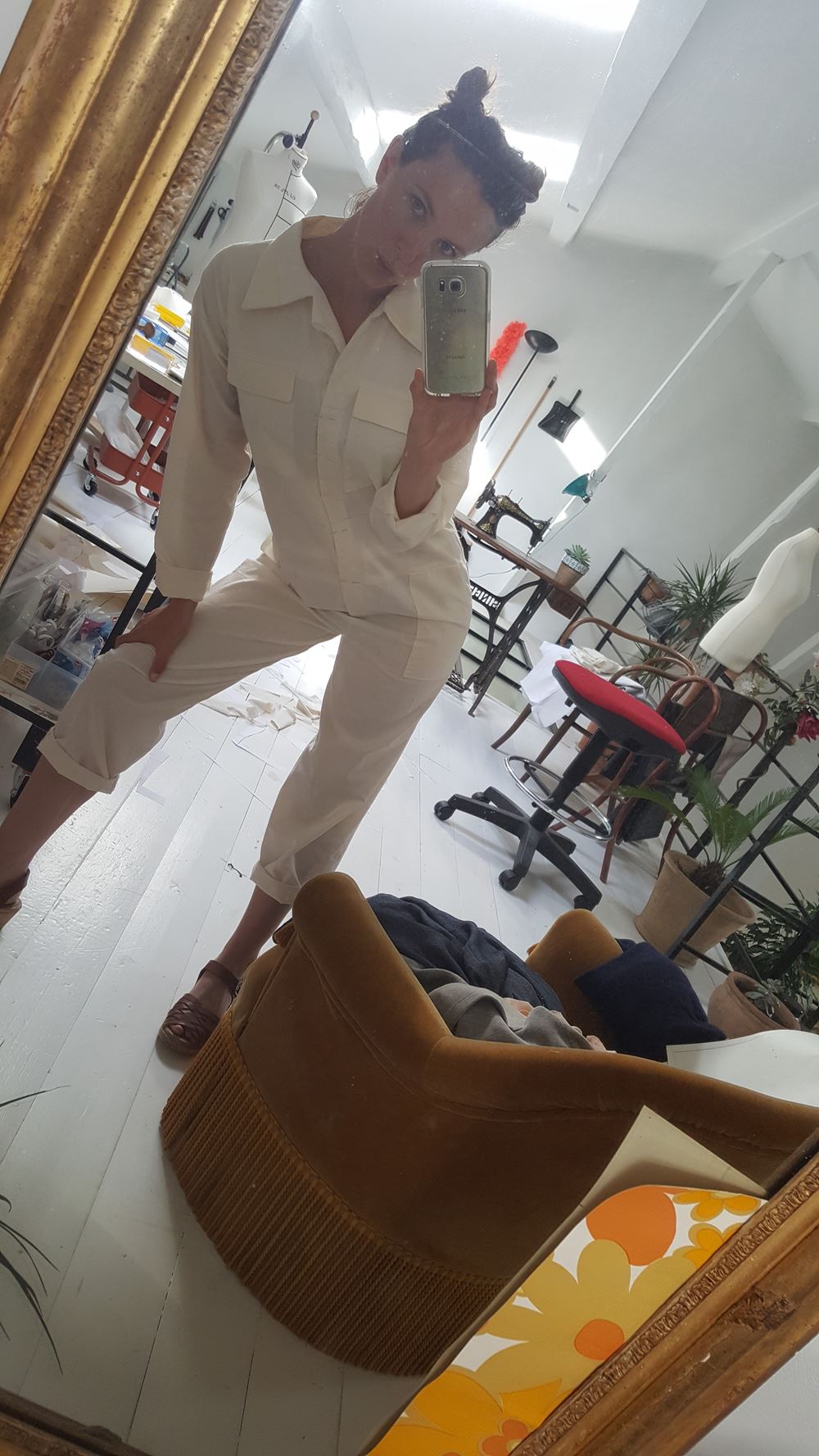 When the fit is good, I start working on the details like the shape and placement of the chest pockets, the fly width, the leg length etc ... At this stage, I'm always taking silly pictures to send to my beloved pattern tester Agathe!
When the fit is good, I start working on the details like the shape and placement of the chest pockets, the fly width, the leg length etc ... At this stage, I'm always taking silly pictures to send to my beloved pattern tester Agathe!
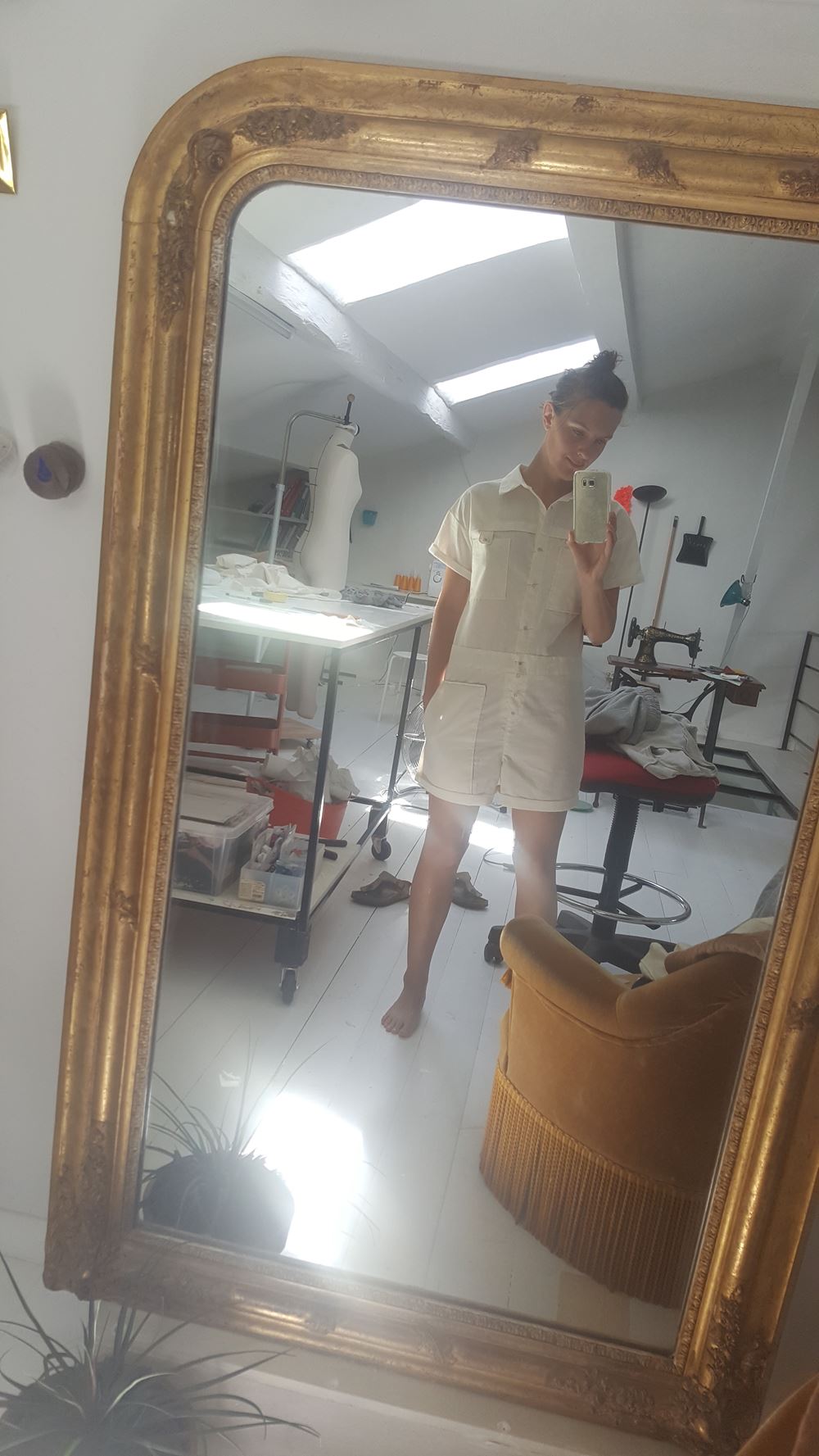 In the picture above, it must be my fiftieth muslins and I'm quite confident that the design of the Jean-Paul boilersuit is almost finished. I used this prototype to test a short leg variation with and without front pockets but it looks more "safari" and less "workwear" and I didn't like it but you can easily hack the pattern to approch this look.
In the picture above, it must be my fiftieth muslins and I'm quite confident that the design of the Jean-Paul boilersuit is almost finished. I used this prototype to test a short leg variation with and without front pockets but it looks more "safari" and less "workwear" and I didn't like it but you can easily hack the pattern to approch this look.
In the picture, you will also notice a small tab on the front chest pocket, but this detail was not retained for practical considerations. This small piece of fabric is not bringing anything interesting to the design and nobody likes tiny pattern pieces!
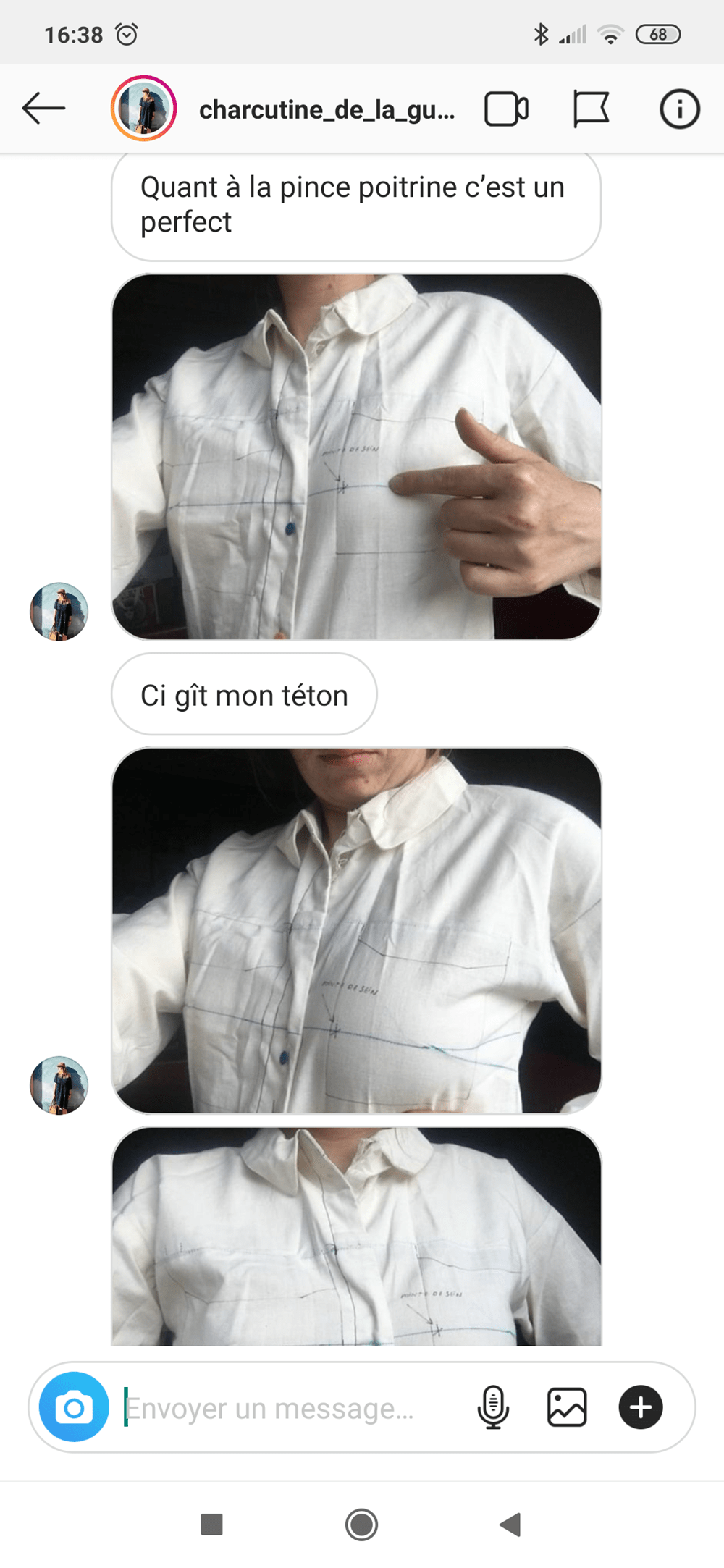
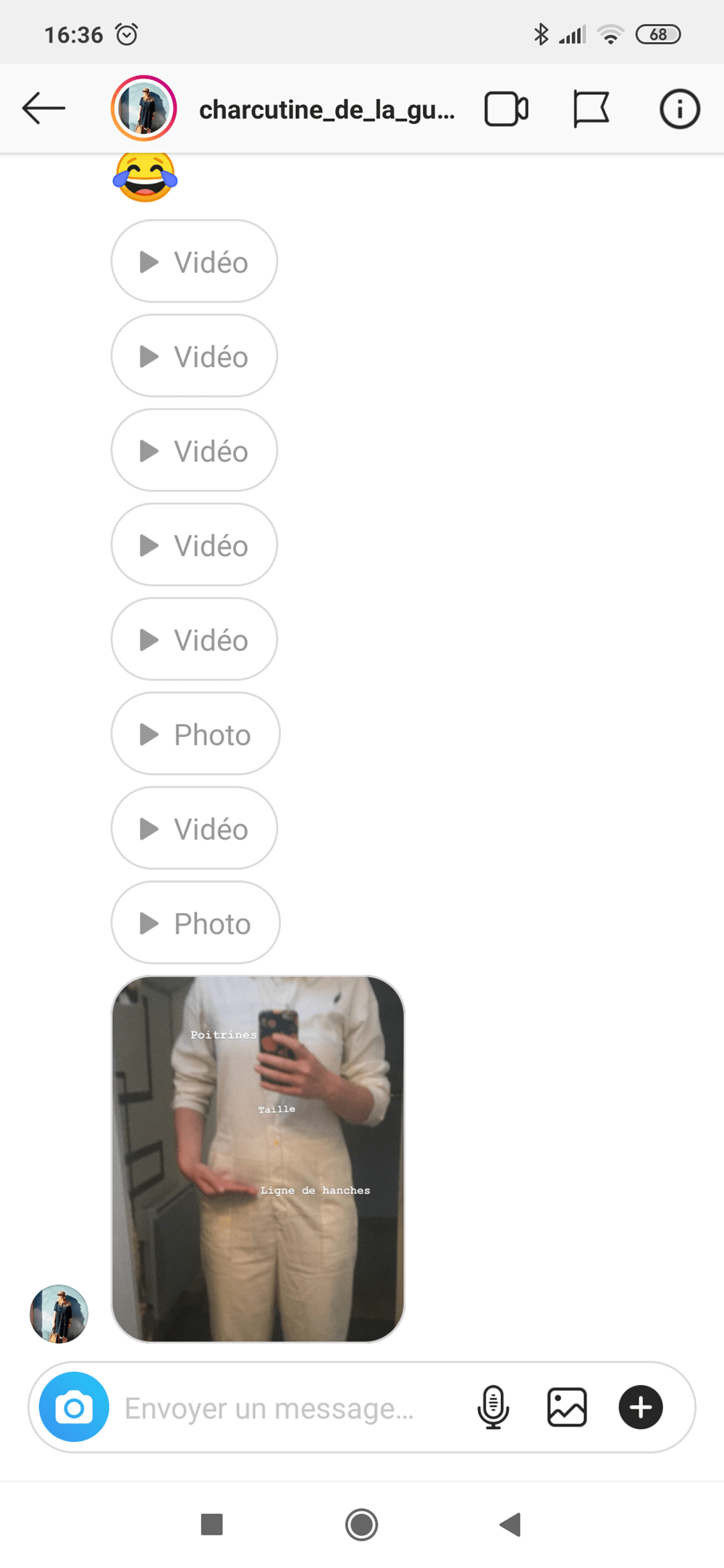
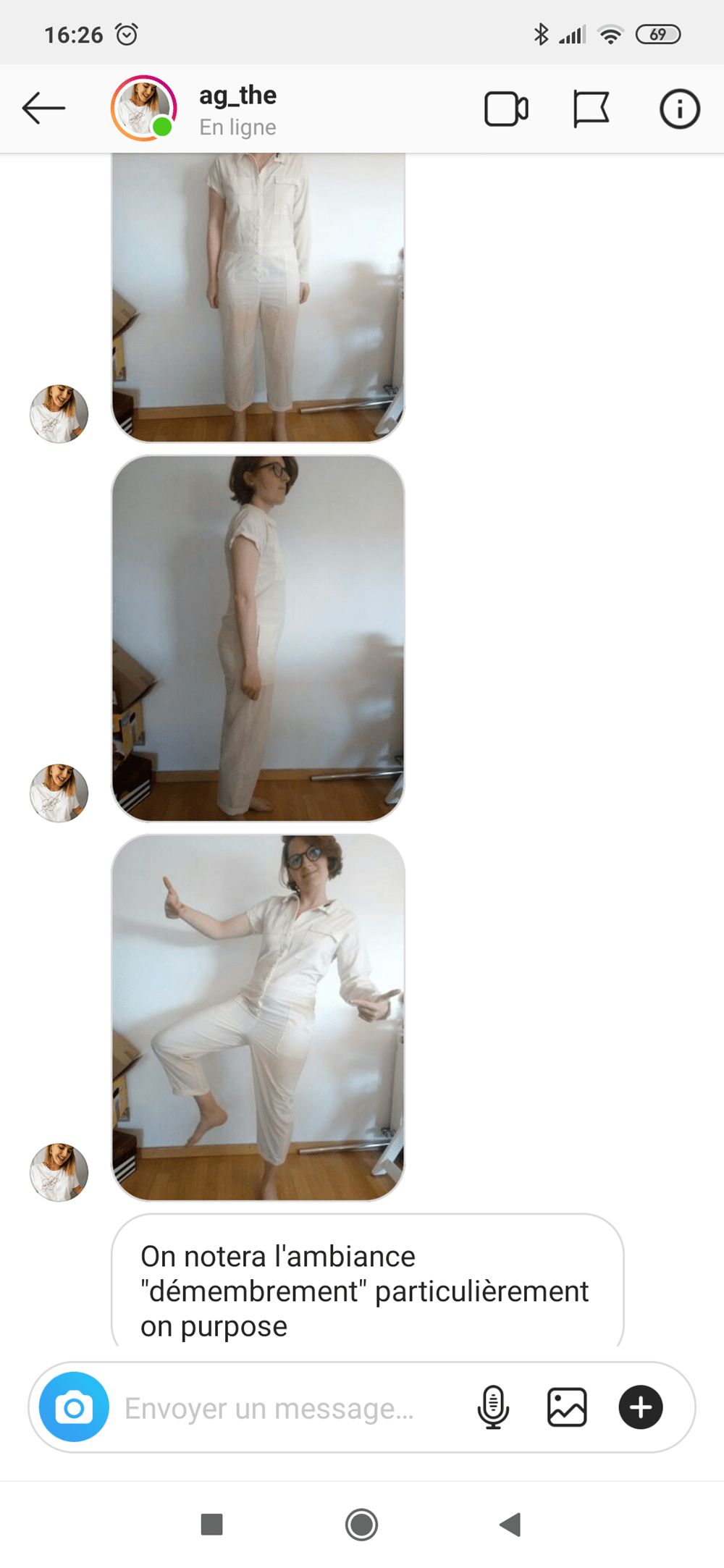 At this stage, it's time to test the pattern on somebody else. Agathe and Charlene kindly offered to test a muslin size 38 for me and they sent me their feedbacks about the fit and some photos.
At this stage, it's time to test the pattern on somebody else. Agathe and Charlene kindly offered to test a muslin size 38 for me and they sent me their feedbacks about the fit and some photos.
*They also agreed on sharing these screen shots.
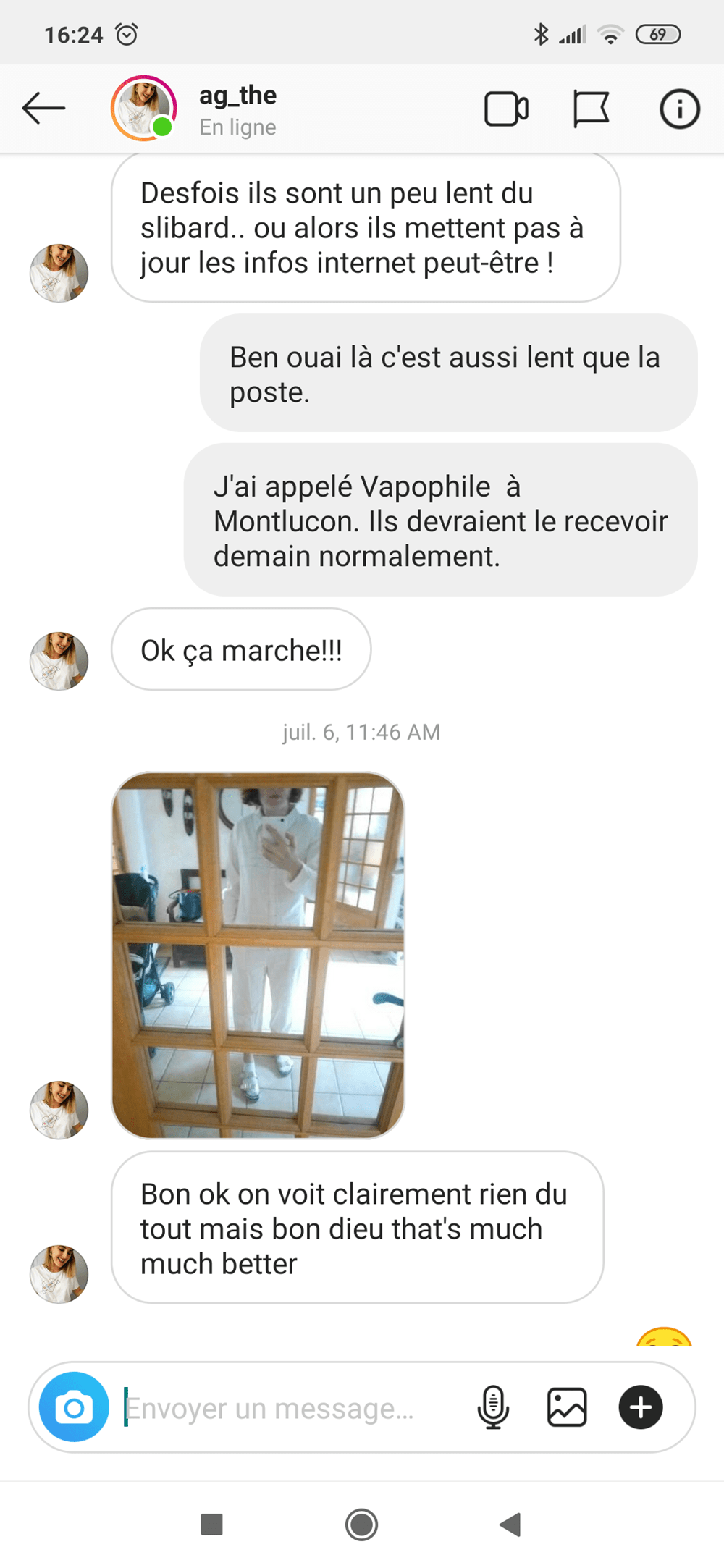
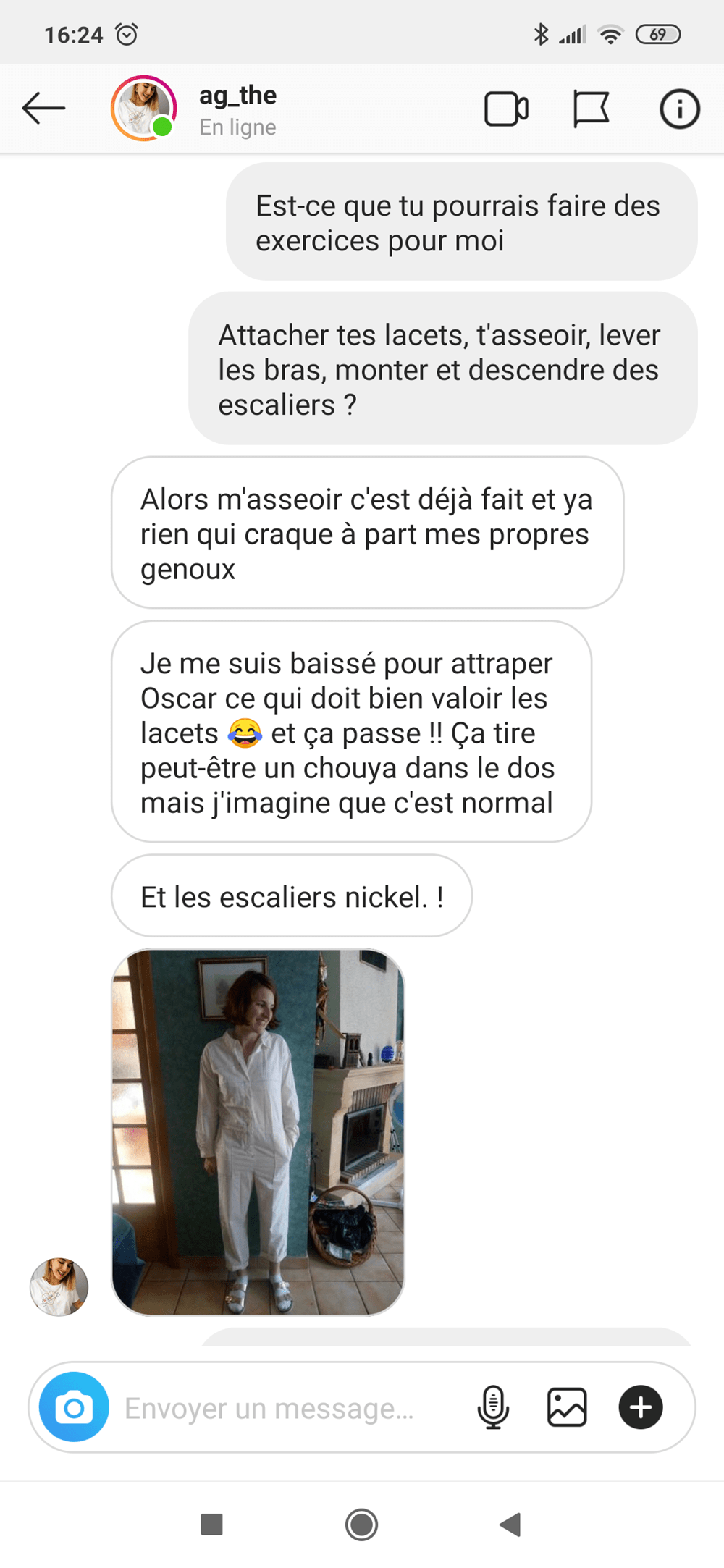 It turned out that the back crotch needed more ease so I've made a new muslin and they accepted to make a new test. Once validated, I'm grading the pattern, working on the french and english instructions booklet, the A4, US letter and A0 pattern sheets and it is ready for a new round of pattern testing! This time my testers will receive the PDF pattern for free and in return, I'm asking for their feedbacks and a photo.
It turned out that the back crotch needed more ease so I've made a new muslin and they accepted to make a new test. Once validated, I'm grading the pattern, working on the french and english instructions booklet, the A4, US letter and A0 pattern sheets and it is ready for a new round of pattern testing! This time my testers will receive the PDF pattern for free and in return, I'm asking for their feedbacks and a photo.
Then I have to sew the samples for the shooting, contact my spanish translator etc... Voilà, I hope you enjoyed this small behind the scene post. Of course this is my own way of working and not all pattern designers are using the same methods.
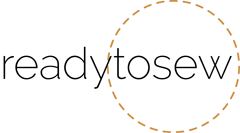
Je transfère sur papaier puis je découpe en A4 et je scann, ensuite je recompose sur mon logiciel de tracé Rhinocéros.
Mais je procède comme ça très rarement, uniquement quand je fais du moulage. La plus part du temps, je modélise directement sur mon logiciel.
Bonne couture, Raphaëlle
Rhinocéros est un logiciel dédié au designer produit (mobilier-petit produit) mon métier avant de devenir modéliste. Ce n'est pas un logiciel dédié au modélisme mais il fonctionne très bien pour faire du tracé donc pour moi c'est ok. Sinon, le logiciel de modélisme le plus abouti et connu c'est Lectra.
Bonne couture, Raphaëlle
Beau travail !
Merci pour ce super article très riche et intéressant à lire pour les consommatrices de patrons de couture ! Je me demande comment procédez vous à la numérisation de vos patrons papier ?
Merci pour votre retour bonne continuation !
Petite question, au niveau de la digitalisation, tu utilises aussi le logiciel rhinocéros ? je ne connaissais pas et aimerai avoir ton retour sur la facilité d'utilisation et de compréhension d logiciel, si une formation de prise en main existe etc.
Merci pour ton retour et cet article très intéressant :)
J'utilise le logiciel Rhinocéros.
Sophia